Вы здесь
Bulanty battle.
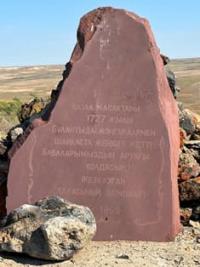
Visit to Ulytau.
“Earthly life is war. We carry a heavy burden until time stops us"
Maarri al-Maarri.
Photos of Ulytau.
Memorial sign to Battle of Bulanty is located on Mount Kalmaktepe, 294.6 meters above sea level, located 1.3 kilometers from right bank of Kalmakkyrgan (Beleutty) River, between Tabylgylysay valleys in west and Aksai in east, 10.7 kilometers to west and a little south of right mouth of Zhide into Kalmakkyrgan River, 152 kilometers to west and a little north of village of Myibulak in Ulytau district in western part of region of same name.
The supposed battle site is located 800 meters north of Mount Kalmaktepe and approximately 300 meters from the right bank of the Kalmakkyrgan River. The area is relatively flat with some hills in the surrounding area, bordered by a mountain and a river.
The first quarter of the XVIIIth century is one of the most tragic and dramatic periods in the history of the Kazakh people. The Dzungar Khanate is stepping up its foreign policy in the western direction. This resulted in frequent military clashes between Dzungars and Kazakhs.
The years of the so-called "Great Calamity" were especially difficult. In 1723 - 1725, the Oirat regions, having united their efforts, carried out a wide invasion of Kazakhstan and Central Asia. The local tribes were actually taken by surprise. Those who managed to escape had to leave without property and livestock for the northern part of Kazakhstan and the cities of Central Asia.
Not meeting any resistance, the Oirat squads, according to some historical information, reached the Hindu Kush and Pamir-Alai. A serious threat of physical extermination hung over the Kazakh tribes and clans. Under these conditions, the leaders of the three zhuzes, having shown wisdom, make an attempt to consolidate internal forces.
Bulantin battle in 1727 - modern Kazakh publicistic sources call it one of the largest battles of the Kazakh-Dzhungar war. There is no historical evidence of the fact of the battle and its course. In 1723, the Khan of the Dzungar Khanate, Tsewan-Rabdan, made successful raids on the Kazakh lands, which resulted in the transfer of vast territories of Semirechye to Dzungar control, the establishment of control over the cities of Tashkent and Turkestan by the Dzungars.
Khujand and Samarkand also became a vassal to the Dzungars. In 1725, the Dzungars defeated the Karakalpaks. In 1727 Tsewang-Rabdan died and Galdan-Tseren inherited the power. In 1726, the Kurultai of Kazakh tribes and clans took place in the Ordabasy area.
It was decided to create a single Kazakh militia. The command was entrusted to the Khan of the Younger Zhuz Abulkhair Khan. It was decided to give the Dzungars a general battle and defeat them. The combined forces dealt a decisive blow to the Dzungars.
The famous battle of Bulanty took place in 1727 between the Bulanty and Bileuta rivers on a wide plain in the vicinity of the Ulytau mountains. The commander-in-chief of the troops was Abulkhair Khan. At the head of their thousands were also khans and sultans - Semeke, Abilmambet, Kokzhal, Barak, batyrs - Sanyryk, Bogenbai, Kabanbai, Shakshak Zhanibek, Tailak Olzhabai and many others.
Khan Abulkhair united the warriors of all three Kazakh zhuzes, having collected more than 30,000 horsemen. The Kazakh army met with the 40,000-strong army of the Dzungars. According to the military tradition, the battle began with a duel (zhekpe-zhek) of batyrs, the outcome of which often determined the outcome of the entire battle.
The famous Zhangir Bagatur, a living embodiment of the fighting spirit of the Dzungars, departed from the Dzungars. The horse danced under him, angrily gnawing at the bit, dropping flakes of white foam on the ground. Khan Abulkhair appealed to the army, who would go out to a duel, and he was told that a young warrior Mamai, who had not yet managed to cover himself with glory, was eager for a duel.
The khan knew this impudent young man, more than once he saw him in battle. Therefore, he allowed Mamai to oppose Zhangir. Mamai galloped towards the enemy. At first they fought with spears, then aybalts (axes) were used, then sabers. It was from the saber of Mamai that the Dzungarian batyr took a dignified death.
Seeing this, the younger brother of Zhangir, Zengu-bagatur, jumped up to Mamai and wounded him with a spear, thereby violating the conditions of a fair fight. However, the wounded Mamai entered the battle with the second enemy and also defeated him.
As a sign of his displayed valor, Khan Abulkhair presented Mamai with the so-called "diamond" saber, which was a great honor for the young batyr and the beginning of his military glory. These fights were of great importance for the Kazakh army, which enthusiastically entered the battle and won an important historic victory.
The Kazakhs, having lured the enemy deep into their territories, suddenly attacked from the right and left flanks. Then a crushing blow was dealt from the rear. The Dzungars were utterly defeated and defeated. The battle that ended successfully for the Kazakhs inspired them to liberate their lands from the Dzungars.
Subsequently, the area where the battle took place was named "Kalmaқ Kyrylgan", which means "the place of the death of the Kalmaks." This was the first victory after the difficult years of the Great Disaster.
Bulanty Battle Memorial Complex is located at an altitude of 356 meters above sea level, located in southern part of ancient Uytas cemetery, 876 meters from right (western) bank of Baikonir River, 16.5 kilometers southwest of village of Baikonir, 62.3 kilometers to west and slightly south of village of Karsakpai in Ulytau district of region of same name.
Geographic coordinates of supposed location of Battle of Bulanty: N46°59'21 E66°16'55
Geographic coordinates of monument to Battle of Bulanty on Mount Kalmaktepe: N46°59'46 E66°17'11
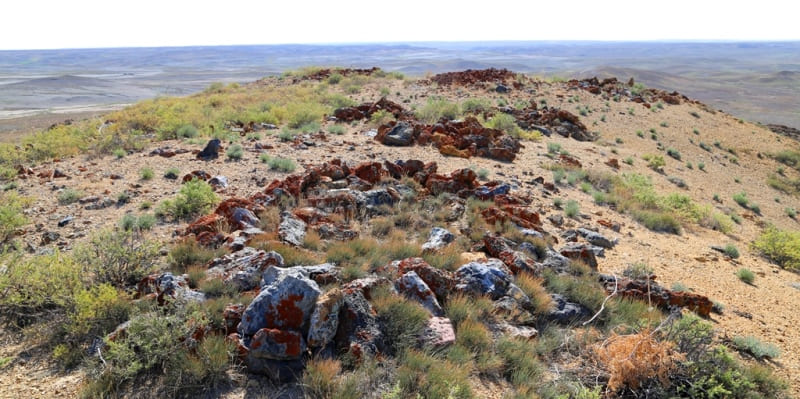
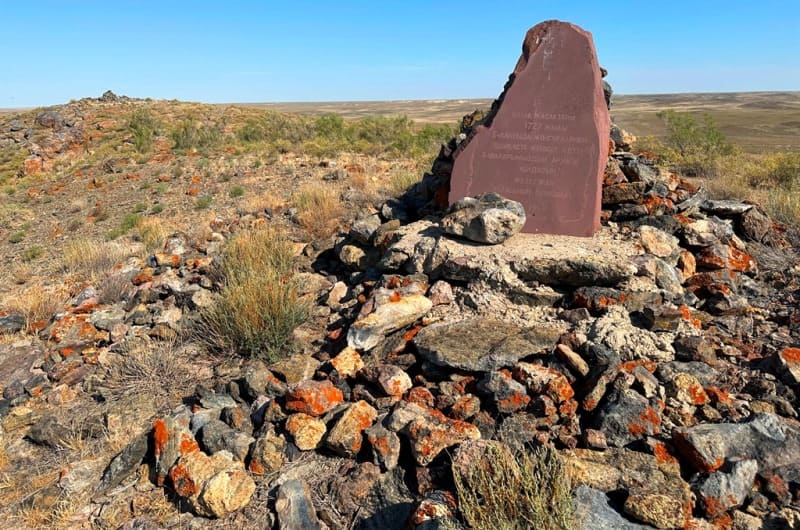
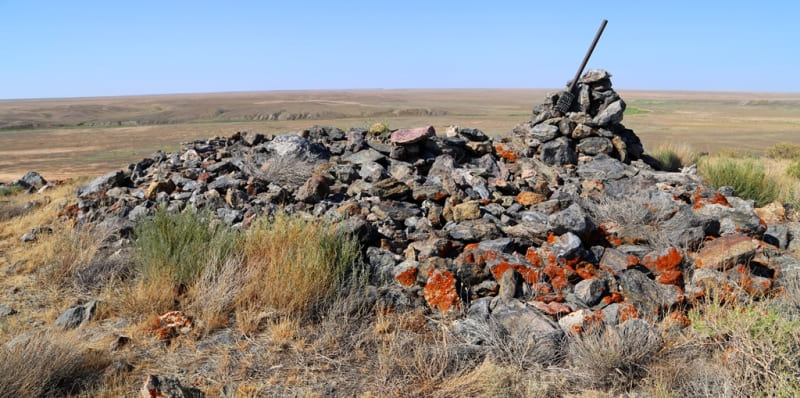
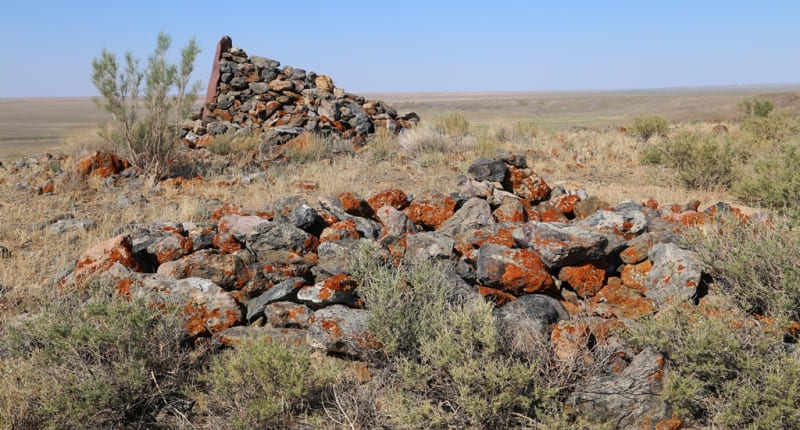
Authority:
Alexander Petrov.
http://www.tarih-begalinka.kz/ru/timetravel/page3259/
Photos by:
Alexander Petrov.







